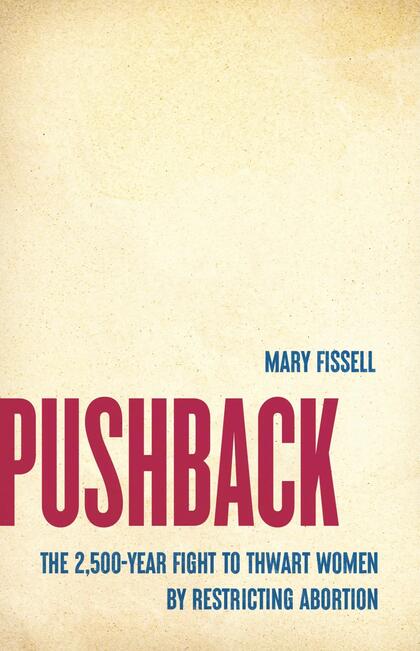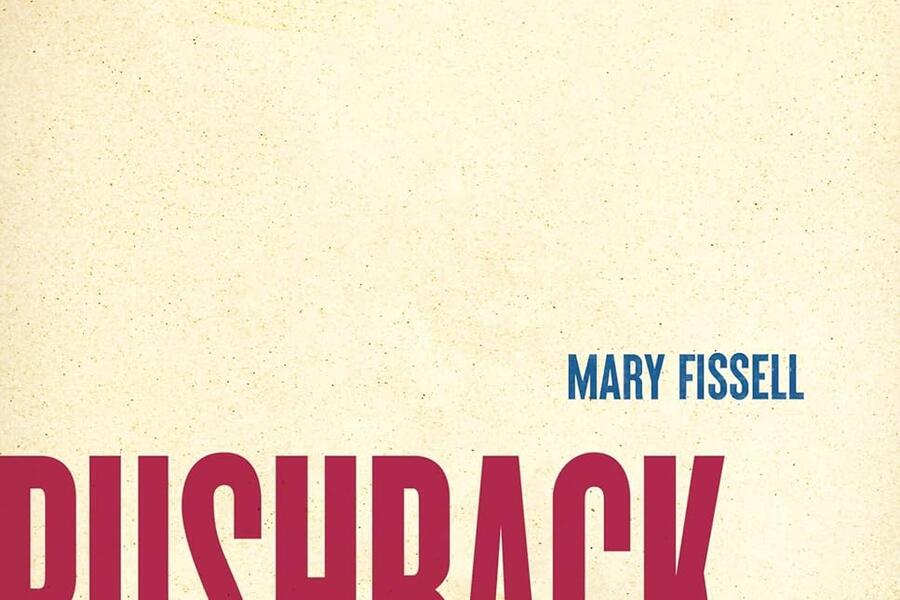Women have been having abortions for thousands of years. And for just about as long, there have been, to one degree or another, organized efforts to prevent them from doing so. Such is the nutshell synopsis of a new history of abortion published in March by Mary Fissell, the J. Mario Molina Professor in the School of Medicine's Department of the History of Medicine. This much can be gleaned from the title alone: Pushback: The 2,500-Year Fight to Thwart Women by Restricting Abortion.

But among the book's revelations, which begin the history lesson in 400 BCE, is how the objections to abortion have changed through the centuries. Today, the focus of anti-abortion efforts is the fetus itself—the notion that life begins at conception, making abortion tantamount to murder.
This is a new argument. In antiquity, when there was opposition to abortion (and there often wasn't much), it was based on the idea "that the fetus is already the man's property, and the woman does not have the right to interfere," Fissell says. From the dawn of Christianity through the early modern period, it's all about the sex. "Christianity brings with it a way of understanding abortion as a sign of illicit sex," Fissell says. "The assumption is that abortion is being done to cover up somebody having sex when they shouldn't, usually an unmarried woman. The real crime is the illicit sex. Abortion is just a pointer to it."
Also new is surgical abortion. While even today medication abortions, using drugs such as mifepristone, account for more than half of all abortions, throughout history almost all efforts to end a pregnancy were via herbal abortifacients, such as pennyroyal, tansy, and the mysterious, now-thought-extinct plant silphium. (Surgically ending a pregnancy was dangerous before anatomy was well understood and antibiotics existed, and it was attempted only in life-threatening emergencies.) It's not known how effective these plant-based abortifacients were. "That a handful of them persist for literally millennia suggests that they may have had some efficacy," Fissell says. "That's an awfully long track record for something that never works."
What is known is that before the modern era, women had more irregular menstrual cycles owing to poor diets or because they were breastfeeding. "There was a ton of ambiguity in the early months of a pregnancy," Fissell says. Missing a period or two was not uncommon. Some women turned to herbal potions to restore their cycle, not induce an abortion—even if that was the outcome.
The notion that a fetus was not a pregnant woman's property first emerged in ancient Rome and reached its apotheosis in the American South during slavery. "Abortion and race are braided together in the American past because of the concern about the enslaver's property and the concern that [enslaved] women were aborting as a form of resistance to slavery," Fissell says. It is also "a rich historical irony" that the roots of the cotton plants enslaved people toiled to grow could be used as an abortifacient.
In 1869, the Catholic Church ruled that abortion at any stage of pregnancy merited excommunication. Some of the loudest secular anti-abortion voices of the era were those of male doctors from mainstream medical schools, such as Harvard and Penn. "They're really unhappy because their livelihood is threatened," Fissell says, noting that abortion services were often performed then by midwives. By 1870, abortion was largely illegal across the country. And then the 1873 Comstock Act made it illegal to send sexual material, including contraceptives and abortifacients, through the mail.
The use of "thwart" in the book's title is telling. "One of the big arguments of the book is that increased abortion restriction is often a form of gender backlash—a response to women seeing gains in their autonomy," Fissell says. "Maybe men are not sitting there plotting and scheming, but one of the ways to resist changes in gender relations is to insist that women should stay home and have babies, and so we can't have abortion." The 19th century's crackdowns, then, are a response to the emergence of first-wave feminism earlier in that century, beginning with the Seneca Falls Convention on women's rights in 1848.
Also see
Fissell does not cover the past 50 years of the anti-abortion movement, which include the overturning of Roe v. Wade in 2022. (She feels the bookshelf is fairly crowded with titles covering this period.) As of this writing, 12 states have banned abortion. A final takeaway from her history lesson is that abortion clampdowns wax and wane. In the 1920s and 1930s, various patent medicines were openly sold for "menstrual control" that were essentially code-worded abortifacients. Abortion providers, whether physicians or otherwise, were rarely prosecuted during this time. The 1950s saw a new crackdown begin.
"Historians all hate to predict the future," Fissell says. "But the reason I think the current restrictions won't last is that they've never lasted. Every time there's this wave of prohibitions, it passes."
Posted in Politics+Society
Tagged women's health, mary fissell, abortion








